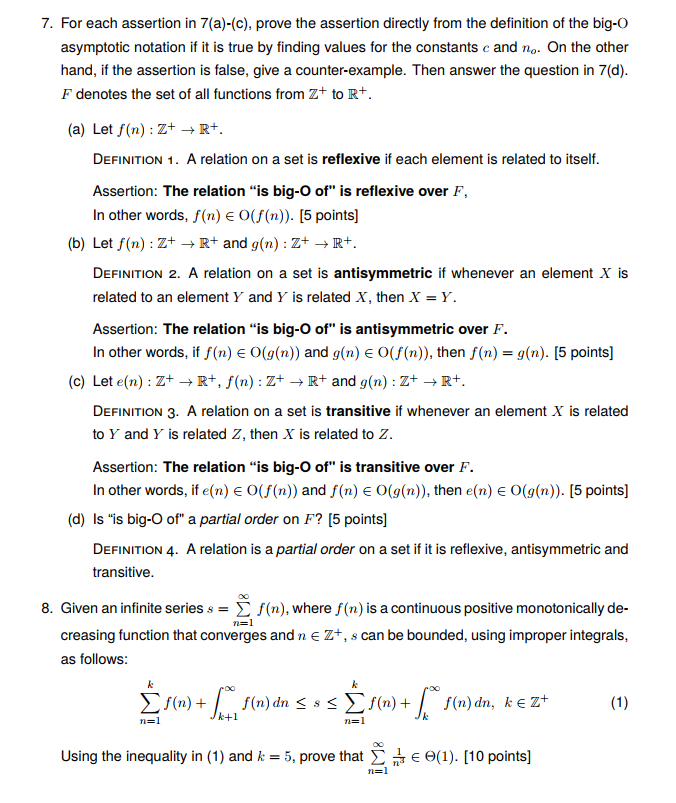Answered step by step
Verified Expert Solution
Question
1 Approved Answer
Can someone help with number 8? For each assertion in 7(a)-(c), prove the assertion directly from the definition of the big-O asymptotic notation if it
Can someone help with number 8? 
Step by Step Solution
There are 3 Steps involved in it
Step: 1

Get Instant Access to Expert-Tailored Solutions
See step-by-step solutions with expert insights and AI powered tools for academic success
Step: 2

Step: 3

Ace Your Homework with AI
Get the answers you need in no time with our AI-driven, step-by-step assistance
Get Started


